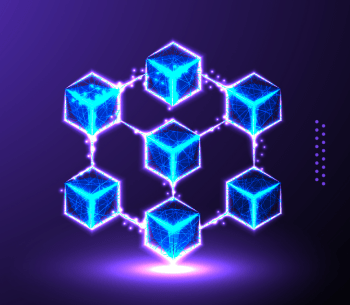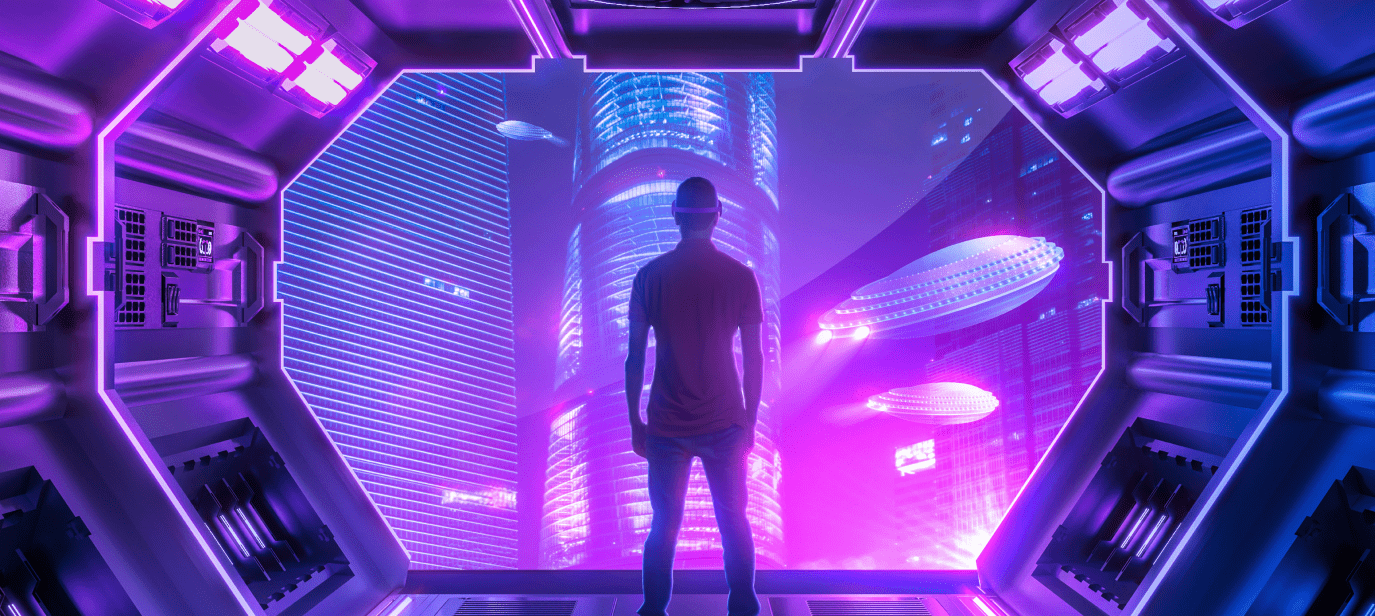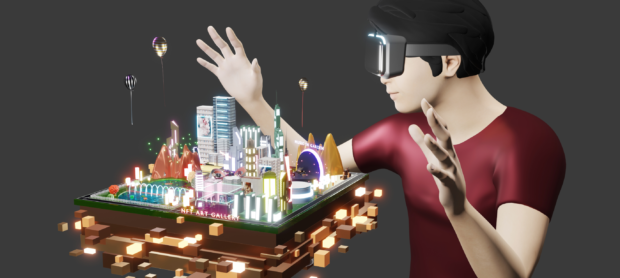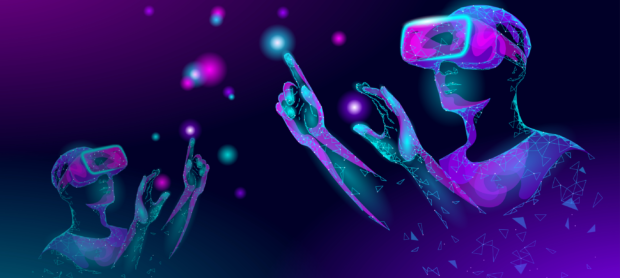The metaverse is not a new phenomenon to people since it was presented in Neal Stephenson’s science fiction book Snow Crash in 1992. The writer described a particular virtual world where users can interact via avatars and forget about everyday concerns, sorrows, and passions. Of course, scientists and cryptography experts became interested in such a technology. And after many years of research and multibillion-dollar investments, the major tech enterprises began to present vast online universes that now attract hundreds of thousands of people. But what technologies formed a driving force of the metaverse?
What Do You Mean by Metaverse?
Metaverse is a unique virtual world created and maintained by its users. It is a shared, persistent, and interactive 3D environment that is accessible to anyone who has a stable Internet connection. People can create unique items, interact, and explore an online universe. The development of the metaverse is an exciting and rapidly evolving field. As technology advances, so does the potential for the metaverse to become a more immersive and engaging experience.
Metaverse offers many opportunities to users: freedom of expression, numerous locations, shopping, gaming, and a chance to participate in entertaining activities. Another vital part of a modern virtual world is a blockchain-based economy that allows users to purchase virtual goods as NFTs and create unique ones to make money. The metaverse is constantly evolving, and its potential is virtually endless.

What Technologies for Metaverse Development Are the Most Demanded?
To make the most of the metaverse, developers need to know the latest technologies and trends. Here are seven of the leading technologies for metaverse development.
Augmented Reality (AR)
A technology called augmented reality places digital content over the actual world. It can be used to build exciting metaverse experiences, like virtual things that seem part of the real world. Interactive experiences like games and lessons can also be made with augmented reality. This technology is applicable to metaverse because it provides tools for users to access digital content from their physical environment via augmented reality, which brings together physical and virtual items. Therefore, this technology is critical to creating a realistic experience for people.
Virtual Reality (VR)
Virtual reality is a specific type of technology that offers the chance to build an entirely immersive 3D world. With the help of this function, developers can produce believable and interesting metaverse experiences like interactive simulations and virtual excursions. Additionally, VR enables users to access digital content from their physical environment, participate in thrilling events, and explore virtual destinations. In Microsoft’s HoloLens, for instance, virtual reality is merged with augmented one to give people the impression that 3D holographic pictures are a natural part of their surroundings.

3D Art
The meaning of this metaverse technology is simple: it creates highly detailed, realistic 3D environments & assets. For instance, 3D specialists create complex 3D characters, objects, and interactive elements. It can also repeat shapes and sizes of real objects, turning the virtual world into the real one, so it will be demanded for a long time.
Artificial Intelligence (AI)
Artificial intelligence is a technology that enables machines to learn and act autonomously. It can develop intelligent agents, such as metaverse avatars, that can interact with users. AI can also create interactive experiences, such as games and educational activities. Bot and chatbot development are heavily reliant on AI, which also gives computer vision in real-world intelligence. But now, it is one of the most valuable technologies in the metaverse. AI provides a valuable thing for metaverses called non-player characters (NPCs). They are frequent in almost all games since NPCs are an element of the virtual world designed to react to player actions. Thanks to AI’s processing capability, NPCs can be placed across 3D environments to support realistic user dialogues or do other specific tasks in the metaverse. In contrast to a human user, an AI NPC can work autonomously and be used by millions of people simultaneously. It works in additional languages as well.
🔍 Check our portfolio to learn more about our AI and Metaverse expertise
Blockchain
Metaverse and blockchain are intimately connected. It is a vital technology that provides a secure, distributed ledger system that allows storing and transferring of digital assets. Blockchain technology enables fast and transparent transactions, facilitates the creation and exchange of digital assets, and can be used to create virtual marketplaces. With blockchain, metaverse users can generate smart contracts, conduct secure and automated transactions, and verify digital identities. Blockchain is essential for creating a safe, distributed platform for metaverse development.


Cloud Computing
This technology matters for metaverse world development because it provides a flexible, scalable, and secure infrastructure to host and access the virtual world. Cloud computing is used to rapidly deploy and access applications and data, allowing for faster innovation and development. Cloud services also offer cost savings by only charging for services used, meaning organizations can save money while scaling as needed. Cloud computing is crucial for creating and managing the virtual world.
Brain-computer Interfaces
Brain-computer interfaces (BCIs) are listed among the technologies that the World Economic Forum (WEF) predicts will shape the metaverse. However, some researchers think BCIs are science fiction now, and no one does business with BCI. According to WEF, brain-computer interfaces are the most far-reaching vision for the metaverse, as it will replace conventional control panels and hardware. The forum did point out that BCI and XR position themselves as the next computing platforms in their own right when used together.
What Are the Prospects for Metaverse Development?
The prospects for metaverse trend development are incredibly positive. Technology has seen massive improvements recently, making it increasingly accessible to a broader audience. As the metaverse continues to evolve, more businesses are turning to virtual worlds to perform their operations and offer new features to their clients. Entirely virtual workspaces will revolutionize the office experience by 2027, according to Gartner, and represent 30% of the increase in organizational investment in metaverse technologies at that time.
Businesses and individuals will have a lot of options thanks to the development of immersive, interactive 3D environments and virtual worlds that can be used to engage with clients, work with teams, and organize online events. Besides, the development of VR and AR technologies is expanding the scope of what the metaverse is capable of, enabling users to explore and engage with realistic virtual environments.
Therefore, the potential of Web-3 virtual worlds is vast, and our imagination only limits its ways to utilize. As metaverse technologies continue to mature, there is no doubt that the development of these ecosystems will experience rapid growth and bring opportunities to the mankind.

Conclusion
Although the metaverse is still at the start of its development, several businesses are actively investigating its potential. Decentraland and The Sandbox are significant projects in the crypto world, but other major corporations are also participating, including Microsoft, Nvidia, and Facebook (i.e., Meta). As AR, VR, and AI technologies develop, we will probably see interesting new features in these virtual, borderless worlds that change this world.
At Eventyr, we create software solutions that make people do things differently. You can always rely on assistance from professionals in AR/VR, metaverse, AI, and many other domains. They use a comprehensive tech stack to create digital products in the best possible way. If you are looking for business and technical experts to bring your innovative ideas to life, feel free to contact us!




